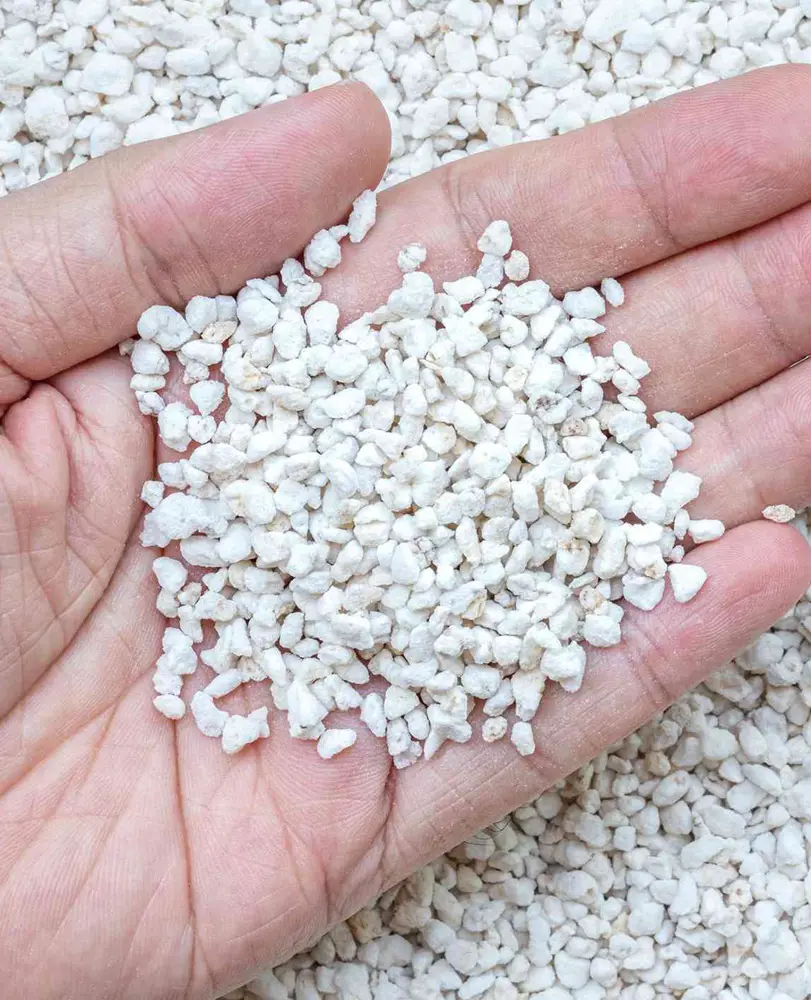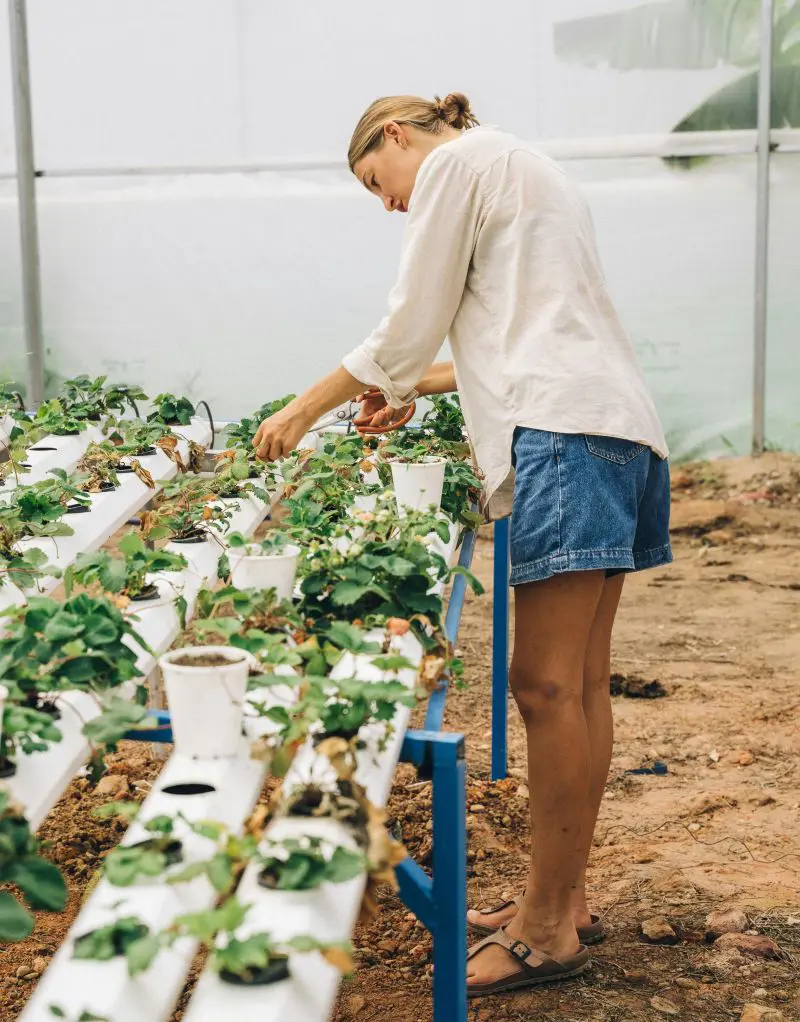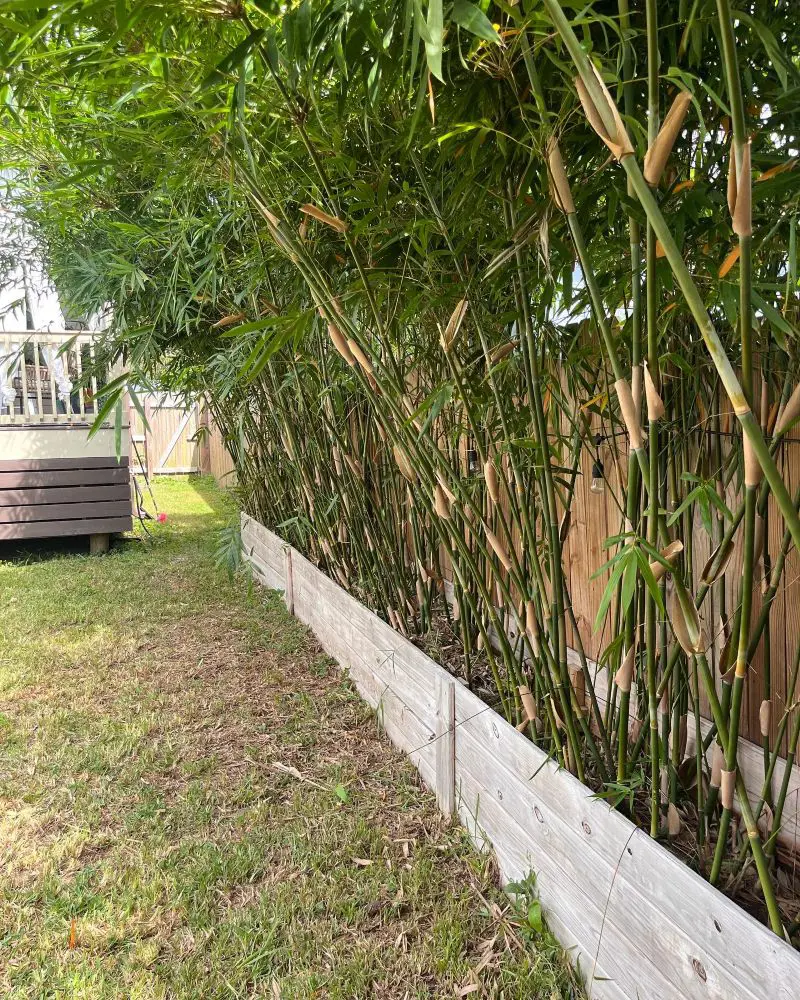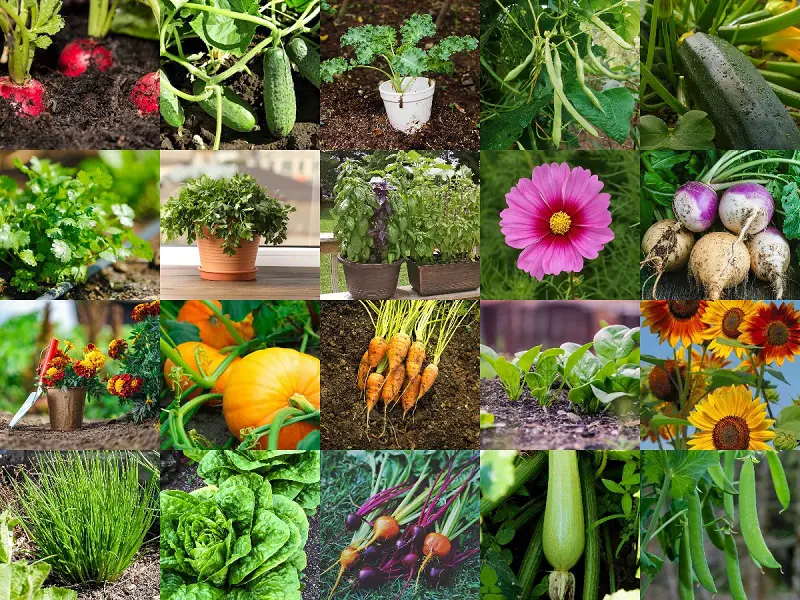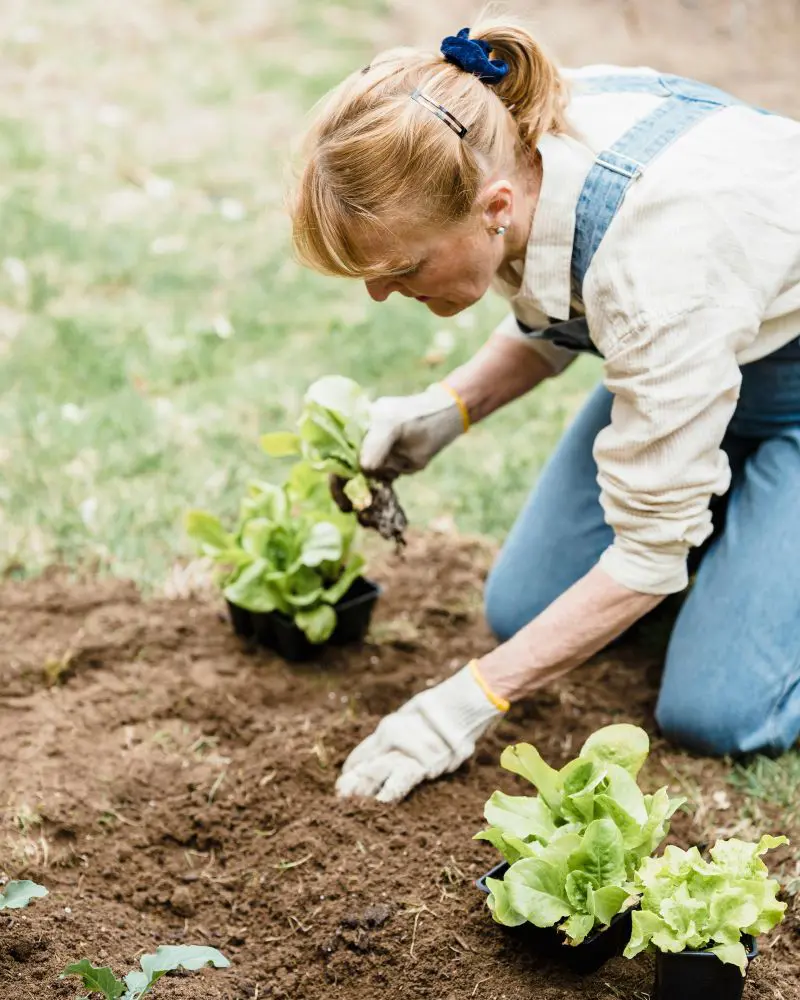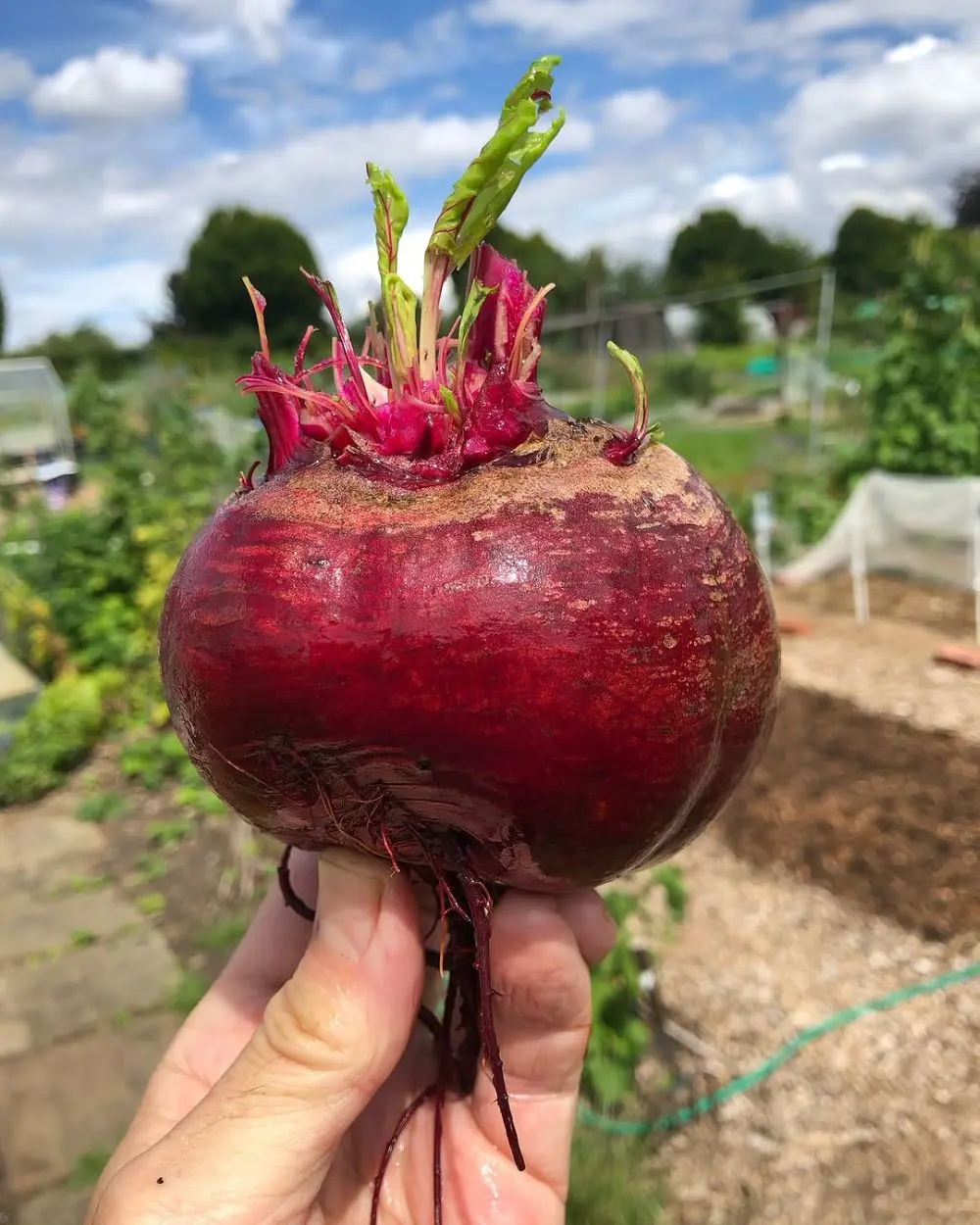Perlite, a lightweight and versatile additive, offers numerous benefits to plants and gardeners alike. From improving soil aeration and drainage to aiding root development, perlite plays a crucial role in enhancing plant growth and health.
Understanding how to use perlite effectively can significantly impact gardening success, whether in container gardening, seed starting, or soil amendment.
This article explores the benefits of perlite for plants and provides practical insights into its application, empowering gardeners to optimize their growing environments and foster healthier, more resilient plants.
What Is Perlite?
Perlite is a form of natural volcanic glass (siliceous rock) that contains a high percentage of water. When heated to temperatures of around 850-900 degrees Celsius, perlite expands to several times its original volume.
This expansion is due to the water content in the perlite vaporizing and creating tiny bubbles within the material, resulting in a lightweight, porous structure. The expanded form of perlite is what is commonly used in gardening and agriculture.
What is Perlite Made Of?
Perlite is primarily composed of silica (SiO2), along with smaller amounts of aluminum oxide (Al2O3), sodium oxide (Na2O), potassium oxide (K2O), iron oxide (Fe2O3), magnesium oxide (MgO), and calcium oxide (CaO). These components are inert and contribute to perlite's beneficial properties for soil improvement.
Perlite for Soil
One of the primary uses of perlite is in soil conditioning. Perlite improves soil structure by increasing aeration and drainage. These properties are particularly beneficial for heavy clay soils, which can become compacted and waterlogged. By incorporating perlite into the soil, gardeners can enhance root development, prevent root rot, and promote healthier plant growth.
Benefits of Perlite for Soil:
- Aeration: The porous nature of perlite allows air to reach the roots of plants, which is essential for their growth and metabolism.
- Drainage: Perlite helps excess water to drain away from the roots, preventing waterlogging and root rot.
- Lightweight: Perlite is much lighter than soil, making it easier to handle and transport.
- Non-Toxic and Sterile: Perlite is inert and free from harmful chemicals, pathogens, and weed seeds, ensuring a clean growing medium.
Perlite Potting Soil
Perlite is a common ingredient in potting soils and soil-less growing mixes. It is often combined with peat moss, vermiculite, and other organic materials to create a balanced growing medium. The inclusion of perlite in potting soil enhances its structure and drainage capabilities, making it suitable for a wide variety of plants, including houseplants, succulents, and seedlings.
Advantages of Perlite in Potting Soil:
- Enhanced Drainage: Prevents water from pooling at the bottom of pots, reducing the risk of overwatering.
- Improved Aeration: Ensures that roots have access to oxygen, promoting vigorous growth.
- Root Health: Helps prevent diseases associated with poor drainage, such as root rot and fungal infections.
How To Use Perlite?
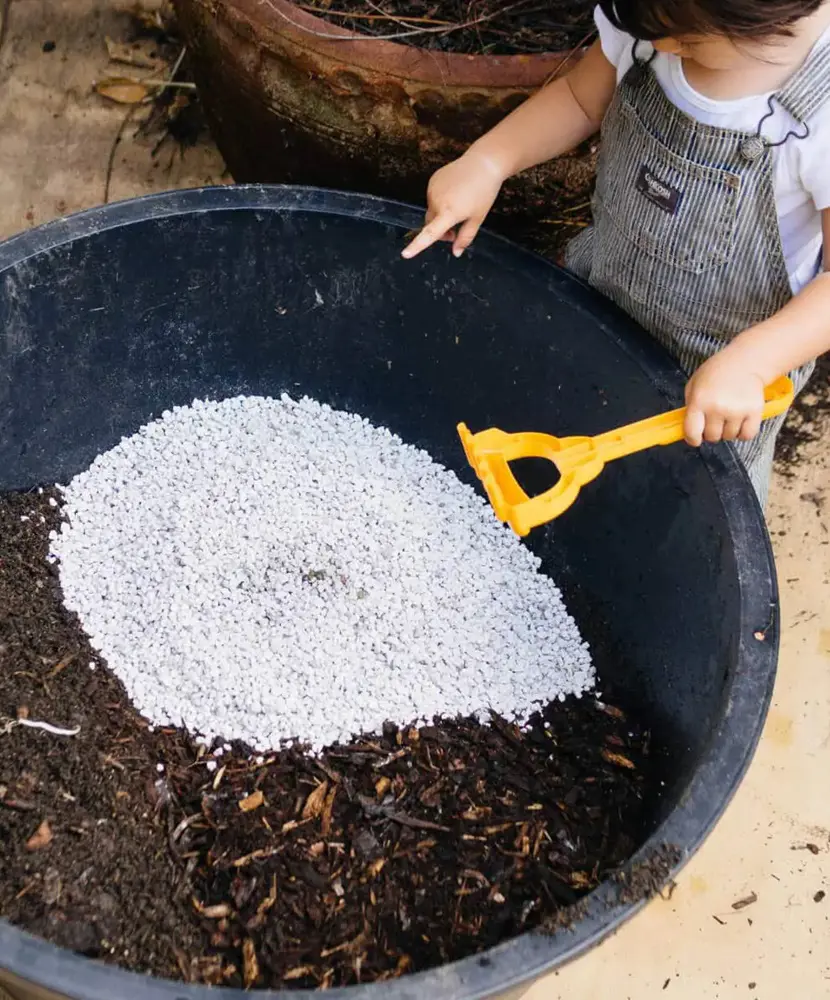
Perlite can be used in numerous ways to improve soil and support plant growth. Here are detailed methods for utilizing perlite in different gardening scenarios:
1. Soil Amendment
Perlite is often added to garden soil to improve its structure and fertility. Here’s how to use perlite as a soil amendment:
- Preparation: Before planting, prepare your garden bed by removing weeds and loosening the soil.
- Mixing: Add perlite to the top 6-12 inches of soil. For general soil improvement, mix perlite at a ratio of 1 part perlite to 2-3 parts soil. This ratio enhances aeration and drainage, particularly in heavy clay soils.
- Application: Incorporate the perlite thoroughly using a garden fork or tiller. This ensures even distribution and optimal soil structure.
2. Potting Mixes
Perlite is a crucial component in potting mixes for container gardening. It helps create a well-draining and aerated environment for plant roots.
- Standard Potting Mix: Combine equal parts of perlite, peat moss, and compost. This mixture provides a balanced growing medium for a wide range of plants.
- Succulent Mix: For succulents and cacti, use a mix of 2 parts perlite to 1 part potting soil. This high-perlite mix ensures excellent drainage, preventing root rot in these drought-tolerant plants.
- Seed Starting: Mix 1 part perlite with 1 part peat moss or vermiculite. This light, well-draining mix supports seed germination and healthy root development.
3. Hydroponics
Perlite is an excellent medium for hydroponic systems due to its lightweight, inert, and sterile nature.
- Growing Medium: Use perlite alone or mix it with other hydroponic media like coconut coir or vermiculite. Fill the hydroponic containers or beds with this mixture.
- Watering: Perlite retains some moisture while allowing excess water to drain away, providing a balanced moisture environment for hydroponic plants.
- Support: It supports root structures and ensures adequate oxygen supply, crucial for hydroponic plant health.
4. Cutting Propagation
Perlite provides a stable, well-drained medium ideal for propagating plant cuttings.
- Preparation: Fill a container with a mix of 1 part perlite and 1 part peat moss.
- Planting: Insert the cuttings into the mixture, ensuring good contact with the medium.
- Maintenance: Keep the medium moist but not waterlogged. The perlite will provide stability and aeration, encouraging root growth.
5. Lawns and Turf
Perlite can improve soil conditions and grass health in lawns and turf.
- Top Dressing: Spread a thin layer of perlite over the lawn, then water it in. This helps alleviate soil compaction and enhances grass root development.
- Soil Mix: For new lawns, mix perlite into the topsoil before laying sod or planting grass seed. A ratio of 1 part perlite to 2-3 parts soil is recommended.
6. Raised Beds
In raised bed gardening, perlite enhances soil structure and prevents waterlogging.
- Soil Mix: Combine perlite with garden soil, compost, and other organic materials. A typical mix might include 1 part perlite to 2-3 parts other soil components.
- Application: Fill the raised bed with this mixture, ensuring a well-draining and fertile growing environment.
7. Composting
Adding perlite to compost piles improves aeration and speeds up the decomposition process.
- Mixing: Incorporate perlite into the compost at a ratio of 1 part perlite to 10 parts compost.
- Benefits: The perlite helps maintain airflow within the compost pile, promoting microbial activity and faster breakdown of organic matter.
8. Container Gardens
For container plants, using perlite ensures proper drainage and prevents waterlogging, essential for healthy plant growth.
- Mixing: Use a potting mix with perlite, typically 1 part perlite to 2 parts potting soil or other organic matter.
- Planting: Fill the containers with the mix, plant your chosen plants, and water as needed. The perlite will help maintain a balanced moisture level.
9. Greenhouses
In greenhouse environments, perlite is used in soil-less growing mixes and hydroponic systems.
- Growing Medium: Mix perlite with peat moss, vermiculite, or coconut coir to create a lightweight, well-draining medium.
- Hydroponics: Use perlite alone or combined with other media in hydroponic setups to support root health and growth.
10. Aquaponics
Perlite is also beneficial in aquaponic systems, where it serves as a growing medium for plants while being inert and lightweight.
- Setup: Fill aquaponic grow beds with perlite or a perlite-based mix.
- Maintenance: Ensure proper watering and nutrient delivery. Perlite supports plant roots and maintains adequate moisture levels.
How Much Perlite To Add In Soil?
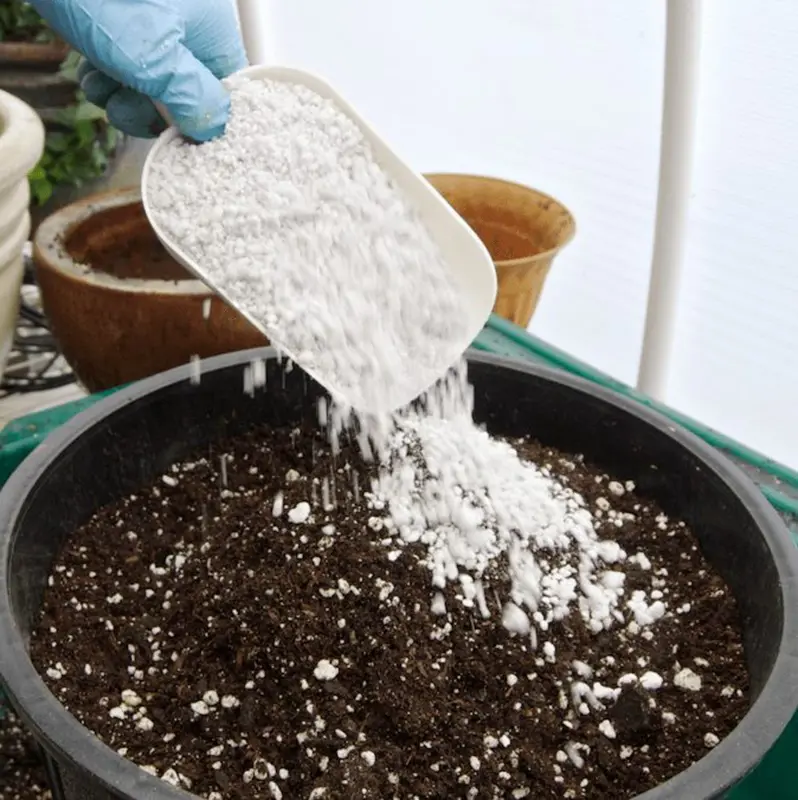
General Soil Amendment
For improving garden soil structure, especially in heavy clay soils, mix perlite into the soil at a ratio of 1 part perlite to 2-3 parts soil. This blend enhances aeration and drainage, making it easier for plant roots to grow and access nutrients.
Example:
- Heavy Clay Soils: Use 1 part perlite to 2 parts soil to significantly improve drainage and prevent soil compaction.
- Sandy Soils: A lighter mix, such as 1 part perlite to 3 parts soil, can help retain moisture without compromising drainage.
Potting Mixes
Perlite is a common ingredient in potting soils for container gardening. It helps create a well-draining and aerated environment, essential for potted plants.
Standard Potting Mix:
- General Plants: Mix equal parts perlite, peat moss, and compost for a balanced potting mix.
- Succulents and Cacti: Use a higher perlite ratio of 2 parts perlite to 1 part potting soil to ensure excellent drainage and prevent root rot.
Seed Starting
Perlite is ideal for seed starting due to its light, well-draining nature. For seed germination, use a mix of 1 part perlite to 1 part peat moss or vermiculite. This combination retains moisture without becoming waterlogged, promoting healthy seedling development.
Cutting Propagation
When propagating plant cuttings, perlite provides a stable, well-drained medium that encourages root growth. A mix of 1 part perlite to 1 part peat moss is recommended for cuttings. This ratio offers a balance of moisture retention and aeration, essential for successful root development.
Lawns and Turf
Perlite can also be beneficial for lawns. For established lawns, applying a thin layer of perlite as a top dressing can alleviate soil compaction and promote healthier grass growth. For new lawns, mix perlite into the topsoil at a ratio of 1 part perlite to 2-3 parts soil before laying sod or planting grass seed.
Raised Beds
In raised bed gardening, perlite helps prevent waterlogging and improves soil structure. Mix 1 part perlite with 2-3 parts garden soil, compost, and other organic materials to create a fertile, well-draining growing medium.
Composting
Adding perlite to compost piles improves aeration and speeds up the decomposition process. A ratio of 1 part perlite to 10 parts compost is sufficient to enhance airflow and promote microbial activity within the compost pile.
